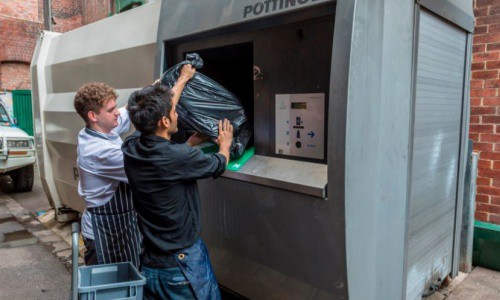The City of Melbourne is exploring the use of an AI-based analytics system to help tackle the issue of waste dumping as the city seeks to keep narrow city streets and pedestrian areas clean, safe and free of garbage.
Currently, the city offers local residents and businesses subscription-based access to the large-capacity compactor facilities. This was done to reduce the frequency of waste contractor visits to busy areas.
With the compactor in place, the city wants to understand how the service is being used and how it mitigates illegal waste dumping, which can quickly create safety and hygiene issues in the area.
In line with this, the city together with waste service contractor Citywide recently trialled Nokia Scene Analytics AI technology to develop a deeper understanding of waste disposal behaviour. The bustling Bullens Lane was selected as a testing site, and the trial is part of the city’s emerging technology testbed initiative.
With the existing network of installed cameras as internet of things (IoT) sensors to monitor one of the compactors, the trial allowed for real-time monitoring and detection of activity in the vicinity of the compactor using a virtual tripwire.
Object detection and object counting was used to identify and count items to show how the compactor was impacted by items incorrectly placed within it, while also identifying potentially dangerous items. Anomaly detection identified unusual movements, such as illegal waste dumping during the night, while face and license plate blurring maintained individual privacy during the trial.
The Nokia Scene Analytics solution employed an AI-powered algorithm to filter and collate data from the cameras, while also combining other data sources, such as operational data on the compactor itself, to create real-time alerts and produce reports.
Indeed, the trial allowed data to provide an insight to questions such as:
- How much waste the Bullens Lane bins receive daily
- The peak usage times
- Alignment between waste collections and waste disposal.
The implementation of this pilot will identify opportunities for improved efficiencies and a potential for further engagement with users around awareness and behaviour.
“This is a great example of using new technology to help remove illegal waste more quickly, make our city cleaner and protect the environment. Our partnership with Nokia is another way we are gathering data to make Melbourne a safer, smarter and more sustainable city,” said Lord Mayor Sally Capp, City of Melbourne.
Initial trial results show that the solution can support the city’s objectives for better, safer citizen experiences while simultaneously lowering maintenance and down time costs for waste management services.
The reports that are generated can help the City of Melbourne better understand the correlation between illegal waste-dumping activities and compactor downtime – keeping maintenance teams better informed and minimise issues.
It also allows them to swiftly address waste dumping activities before they become a hazard, viewing locations in real-time to observe any obstructions to service vehicle access, and adapting their schedule to reduce unnecessary visits and minimise their carbon footprint.
By understanding patterns of compactor usage and waste dumping activities, the city of Melbourne is also able to patrol the area more effectively, while developing an ongoing campaign to better inform and educate the community.
Capp added: “This innovative project will help to avoid hazards and make our streets even cleaner by allowing our waste services to better understand behaviour trends related to the illegal and dangerous dumping of waste.”



